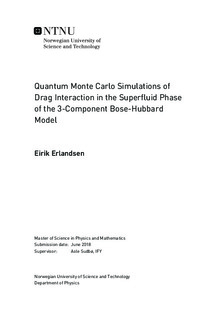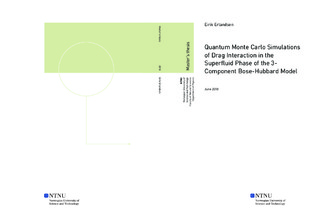| dc.description.abstract | We study Andreev-Bashkin drag interactions between the superflow of different components in the superfluid phase of a three-component Bose-Hubbard model without component-mixing interactions, relevant for cold atom systems subjected to an optical lattice. By means of directed worm algorithm path integral Monte Carlo simulations we produce the phase diagram of the superfluid drag density as a function of the nearest-neighbor hopping amplitude and the chemical potential in the case of component-symmetric parameters. In both one and two dimensions, we find an expected region of negative drag close to the tip of the first Mott lobe and a generalization of the two-component supercounterfluid phase in parts of this region. In addition, we also find a more trivial positive drag with strongest presence below the Mott lobe. Further, we investigate the dependence of the drag on the details of the intercomponent interactions strengths in the weakly-coupled regime. In accordance with mean-field results obtained by Stian Hartman, we find that, unlike in the two-component case, the drag is no longer independent of the sign of the intercomponent interaction strengths. In particular, the drag between component a and b can either be strengthened or weakened by increasing interaction strength between component a and c, depending on the sign of the interaction strength between b and c. | |

